You might think that marshes and other wetlands are only a good source of food when it comes to finding frogs, ducks, and other animals to eat in a survival situation.
However, there are plenty of plants that can be harvested from such an environment, too. One of the most nutritious and widely available? Cattails.
Although you can eat the roots, shoots, and seed heads of these plants raw or cooked, fried like potatoes, or even in dishes like stir-fries, one of the most popular ways to eat cattails is by grinding them down and making bread.
Related: Delicious Recipes Using Cattails – “The Supermarket of the Swamp”
Cattail bread is not only delicious, but it’s a perfect item to have on hand in a survival situation. Here’s how to make it:
How to Harvest Cattails
You can harvest cattails at any time during the year, even the dead of winter, and every single part of the plant is edible.
Make sure you correctly identify a cattail. It is easiest to identify in the late season, as it will look much like a corndog!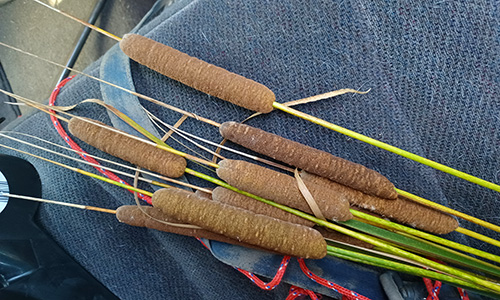
Cattails are very starchy so they are perfect for making bread. The entire plant can be eaten and many parts can be used for bread, but the most common part of the cattail used for bread making is the rhizome.
This is the underground stem or root. It contains lots of carbohydrates and is extremely starchy.
You can gather rhizomes at any time of the year, but you may have the best luck in harvesting cattails for breadmaking if you do so in the fall.
Wait until the plants have died back in late fall, since by this point the plants will have stored lots of starch and energy in their roots.
You will need to harvest quite a few cattail roots in order to make a decent amount of flour, so don’t be stingy when it comes to gathering.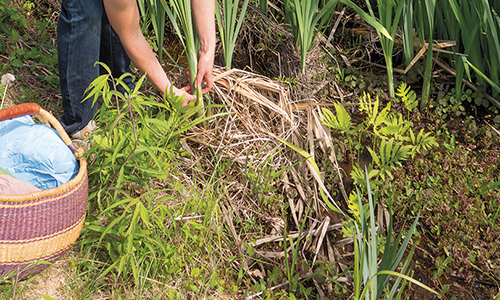
Be mindful of the location from which you are harvesting the cattails, too, since rhizomes often accumulate metals and other pollutants with ease and you don’t want to introduce these to your food supply.
Related: How To Pickle Cattails For Long-Term Preservation
To dig the rhizomes, wade out in the water to where the cattails start making way for open water. Using your hand, follow the stem of the plant a few inches down into the mud.
You should feel a spongy, ropelike stem that leads away from the plant in a horizontal direction. Tug gently. If it is connected to another cattail, you’ll see the second plant wiggle. You can cut both ends and pull the rhizome out of the water.
The rhizome itself is not a very appealing or tasty-looking item. It looks much like an octopus tentacle and has tiny threadlike roots all over the place. You will need to remove the outer layer of the rhizome before you grind the root for bread, since it’s inedible and tough-tasting.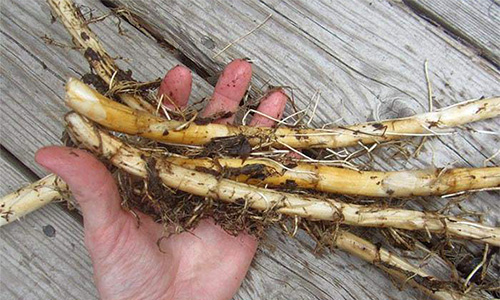
How to Make Bread With Cattail Flour: Step by Step
1. Clean the Cattails
The first thing you should do is clean the cattail rhizomes.
If you were involved firsthand in the harvesting of the rhizomes, you probably know how disgusting and mucky the water was where you harvested.
It’s important that you get all of that muck off your rhizomes before you begin processing them!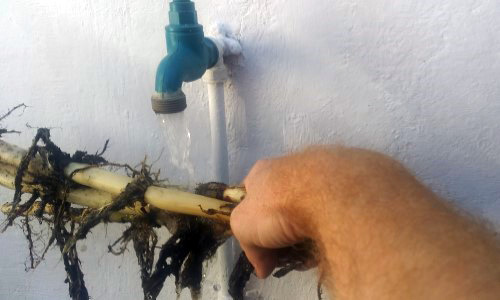
Soak them for an hour in warm water, then scrub, rinse, and repeat. Be as thorough as possible in your cleaning, but if you can’t get all the dirt off, don’t stress – you’re going to peel the rhizomes in the next step.
2. Peel the Rhizomes
Next, you should use a sharp knife or a potato peeler to peel the rhizomes.
Related: How to Make Your Knife as Sharp as the Devil Himself
It’s just like peeling carrots – be sure to get all the dirty pieces off and peel thoroughly to reveal the starchy center.
3. Break the Rhizomes
Now you need to extract the starch from the rhizomes. There are a couple of ways you can do this.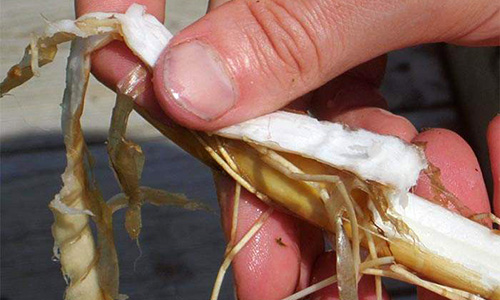 The easiest way is just to break the rhizome into a large bowl of water. Work the rhizome into the water until the water turns milky white as the starch is removed. Let it settle for about three hours.
The easiest way is just to break the rhizome into a large bowl of water. Work the rhizome into the water until the water turns milky white as the starch is removed. Let it settle for about three hours.
You’ll return to find the starch separated from the water at the bottom. You can then pour off the water and leave the starch to dry outside.
Another way you can remove the starch is to scrape the rhizome with a sharp knife, working from the bottom up as you draw the starch out and collect it on the knife blade.
You can then leave this starch out to dry or stir it into water just as you would in the other method. You’ll wait for it to dry for a few hours after removing it from the water.
4. Grind the Rhizomes Into Flour
Now, you can grind your rhizomes into flour. Use a mortar and pestle or a wheat grinder to get the best, finest consistency.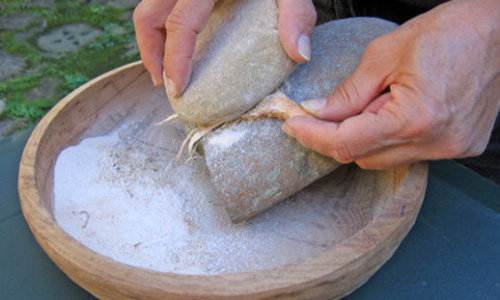
5. Make and Bake Your Bread Dough
This is the most enjoyable part of the entire cattail bread-making process!
Combine the following ingredients to make your bread. You can of course substitute the butter for whatever kind of grease you have on hand (lard is a common substitution).
Similarly, you can blend together whatever kinds of flour you have to make a more delicious loaf of bread.
If you don’t have wheat or acorn flour, feel free to use white flour or additional amounts of cattail flour – this recipe is written as such to accommodate for the fact that you won’t get a lot of flour out of your rhizomes (it takes quite a few rhizomes to make a cup of flour).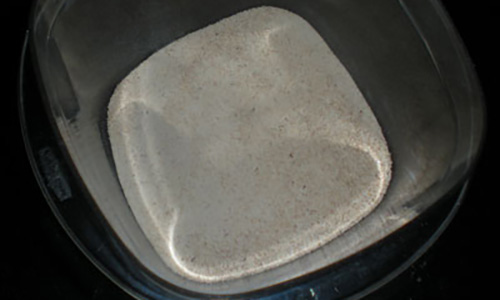
Cornmeal is another substitution you can make.
To make the recipe, just combine the ingredients below and knead.
Allow the mixture to rise for three hours before baking at 400 degrees for around 20 minutes, or skip the rising process altogether and just cook the bread on hot coals over the fire (the most common choice in a survival situation).
If you cook the bread like this, it should only take about ten minutes total, but be sure to flip about halfway through.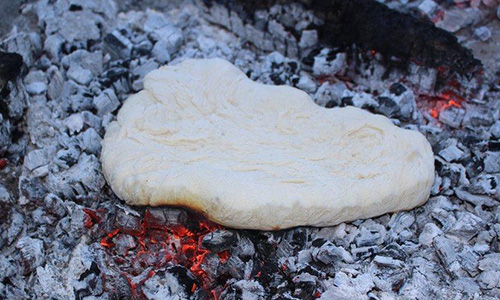
The ingredients are as follows:
- 1 cup cattail flour
- 3 cups wheat or acorn flour (or a combination of the two)
- 2 ¼ tsp dry yeast
- 2 tbsp sugar
- 1 ½ tbsp salt
- 2 tbsp butter
- 1 cup milk
- ½ cup water
Storing Leftover Flour and Bread
You can store your cattail flour just like you would any other kind of flour. Keep it in a sealed container away from moisture, heat, and sunlight.
If you’re concerned that it will go bad before you get the chance to use it, you can freeze it, too, although this isn’t necessary in most cases as it should last several months.
The bread will go back quickly – usually in just a few days – but feel free to whip up a few batches and stash the extra loaves in the freezer.
You shouldn’t notice any difference in taste, quality, or texture when you store it this way.
Did you know that you can also make cattail flour out of other parts of the plant, like the pollen? This is trickier to make, since you’ll need lots of pollen in order to make a batch of flour.
However, it will allow you to get more use out of the entire plant – something that’s super valuable in a survival or self-sufficiency situation.
Grab your waders and head out to the swamp – it’s the perfect time of year to start harvesting cattails. You have lots of bread to make!
You may also like:
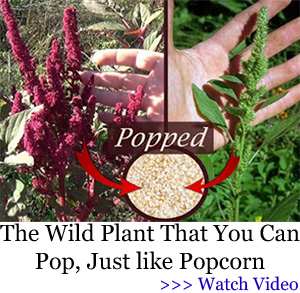 Can This Be A Better Alternative To Modern Antibiotics?
Can This Be A Better Alternative To Modern Antibiotics?
What Happens If You Put Garlic In Honey (Video)
4 Ways to Keep Monsanto Out Of Your Backyard

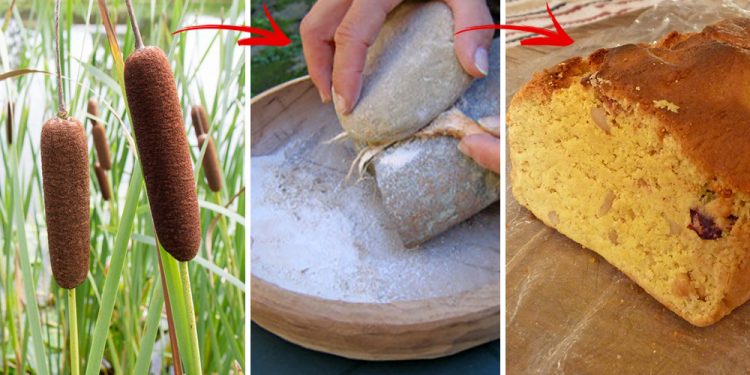






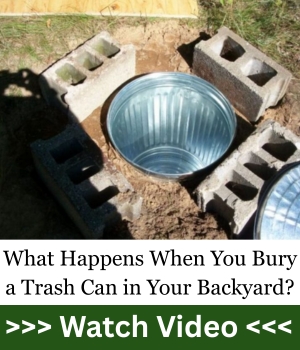






I can’t find any cattails in my area..
The instructions break down. Remove the starch. Why? What do you do with it? Grind the rhizomes. Do you dry them first? Remove the starch and mix it back in?
The rhizomes are stringy and fibrous, so you don’t actually use them, but the white inner parts are where the starch is. Once they are peeled, I cut them into short lengths, and pound them until they are mashed up pretty well, then put them in water and work them around with my hands. Fish out or strain out the rhizomes, and when the white starch settles out, drain off the water. Sometimes I put more water in and stir, and let it settle out again. If you drain it slowly, you’ll have a pretty solid layer of starch in your container. I’ve never dried it, just used it wet and used less liquid in my recipe. I guess I’ve never tried to store it, just made it as needed…
Good question, I was wondering the same thing. The directions are somewhat confusing between the cutting up the roots and soaking them to get the starch out. Then you say to grind them. So do you keep both the starch and the ground root? Good to know article!
Thanks!
This was a timely article since I have a new pond and was wishing I had cat tails up at the marshy end. And lo and behold, I spotted a small clump of them last week. I guess they’re too young since they don’t have heads on them yet but my plant id app identified them as broad leaf cat tails. I had heard the entire plant is edible so I’m a happy camper.
DG – What app did you use?
I use Picture This on my iPhone. However, it is not always completely accurate. It identified newly planted oregano as something else. Wow! Big miss. I could tell it was oregano just by the smell of the plant. I haven’t tried it recently to see if it identifies oregano correctly now that the plant is much bigger. Otherwise, it has pretty much corresponded to my guess or in some cases, I was surprised at what the plant was identified as but had no idea if it was correct or not. I suppose I could go on line and ask for pictures of the plant from other sources.
In fact, now that I am typing this and that idea occurred to me, I think that I shall do that in the future when I get an identity of a plant that I can’t identify from personal knowledge.
I’m glad I replied to CC’s query because I thought of a way to back up plant identification while typing this that hadn’t occurred to me before. Thanks, CC
Make perfectly clear that you have Cattail NOT Iris, as the Iris (aka Flags) is poisonous.
Once again, this list provides such valuable information that is difficult to find elsewhere. Actually I wasn’t much interested in this article because in SoCal, cattails are a scarce plant. There is a small group of them growing in the sump from a city well near the goobermint center but I wouldn’t dare harvest them for food. It is located at the intersection of the on-ramp for a busy interstate with lots of truck traffic going from the local port to I-5 and the intersecting street is the second busiest in the city and probably ranks in the top ten in the country. If the water isn’t polluted from the homeless using it for a toilet, it certainly contains significant amounts of whatever chemicals come from engine exhaust and brake pad wear. There may be cattails located around a lake about 20 miles away but I haven’t been to that lake since my grandson who graduated from college two years ago was in grade school, and with the water level significantly reduced due to scant rain I haven’t a clue what the shoreline looks like. Long way to go to look for non-existent cattails.
But while replying to another comment, I hit on a method of verifying the accuracy of my plant identification app on my iPhone. I’ve had it for over a year and except verifying my own identification of plants I was always unsure if it was as accurate as touted based on my experience with oregano. I now have that verification method. I don’t know how long it would have taken me to figure out such a simple verification method — perhaps never — without this list and CC’s question.
This, like many articals on this site, leaves out quite a lot of details, probably because (every body knows that) poor assumption. Many of us don ‘t If you have extracted the starch content, why are you grinding the residue?, what do you do with it later? Why not just grind the whole thing first and be done? Dry the rhizomes before grinding? Seems like adding a lot of water that has to be dryed is counter productive.
Just a few thoughts and questions.
David Emerson, I’m with you. Reading the article I was wondering if we throw the starch out, keep it for something else or mix it with the ground rhizomes. There’s no information about what to do with what.
This article puts me in mind of another common, similarly useful plant, Smilax spp.,called greenbrier, brambles, and cat claw, numerous species of this plant around the world, all useful. The leaves are variable in shape and color, but it is the only North American vine that has both tendrils and thorns, the tendrils twining and the thorns recurved and viciously sharp. If you ever have to get off the trail and go bushwhacking in Texas you will run into walls of Smilax twining through the brush, it’s impossible to avoid and commonly rips skin and clothing, nature’s concertina. All soft parts of the plant above ground are edible, the berries mildly sweet, the growing ends of the stems tasty and nutritious, new leaves also. The important survival part of the plant is its underground tubers, the tubers grow in a mass and look like ugly potatoes except, like cattail, they are too tough to eat. The most tender part of the tuber is closest to the plant and can be smashed and broken up under water like cattail to release the starch which is mixed with other flours or used to thicken and flavor other foods. Smilax tuber has a bitter taste but is highly nutritious and, because of its abundance, an important source of calories in a survival situation. A more common way to use the tuber is to cut it in 1/4 inch slices, let them dry a few days, then throw in a pot of boiling water. At first the product will be a strong and bitter tasting tea that has been used medicinally for thousands of years, Sarsaparilla. A longer boil produces a soft gelatin useful in recipes and currently popular among Vegans as a replacement for jello in jello shots. I suppose the Smilax jello shot is a natural cure for sobriety? Sarsaparilla is packed full of all the plant compounds that people love to tout as remedial for everything from infantigo to kidney cancer. It has been popular among Southwestern weight lifters as a substitute for steroids and has a long history as a sexual stimulant, so be careful who you drink it with. It is produced and sold all over the country. Root beer used to be a mix of Smilax, Sassafras, vanilla, cinnamon and other herbs, it’s mostly artificial flavors now since the glorious scientists in the PDRK declared sassafras carcinogenic.
When I took map making and orienteering the instructors made sure that all of our problems led us through multiple thickets of greenbrier, my experience is if you are trying to make a natural barrier of thorny plants Smilax is a great addition as it grows quite well in the shade of other plants.
In all honesty, I don’t think I’ll be making this anytime soon, but that said, it’s a good thing to know if you happen upon cattails that you can do some pretty incredible things with them in the kitchen. If you happen to be hungry and that is all there is, this will keep you fed.
Let all be ready to eat roots and varmints, and all pray we never have to!
I agree. Eating possum or crow is low on my list of meals I really want to try. That said, all one has to do is read about the the famine in Ukraine and Kazakstan created by Stalin’s failed collectivization of the farms and attempting to force cultivation of lands that traditionally had only managed to support migratory grazing cattle.
I can’t imagine swapping my children for neighbor children to kill and eat because I really can’t bring myself to kill and eat my own children. That reportedly was an all too frequent practice in those starving countries. Folks, that is true desperation. I can’t imagine what I would do in similar circumstances and I sincerely hope that I am never, ever that desperate. My present state of mind is that group murder and suicide would be preferable but that is after eating a satisfying dinner followed by an out of date Cliff Bar to remind me that things could get desperate quite quickly. Just thinking about such terrible things almost makes me weep.
Interested in independence
Don’t we all, but a little amplification would certainly clarify your post.
I think enough information is given here to give us a heads up on where to start. And…start practicing! Reading about this is one thing, but to have hands on experience, that changes everything.
As for apps, iNaturalist & PlantNet. Both are great resources.
Sad part is, that all of nature was once our natural habbitat, Now we rely on the local grocer to provide us with food that contains less nutrition and more toxins, anything that grows wild is far more nutritious and a better medicinal value than the shit we consume from a local market, eating like a caveman should be the way to go, but as humans we have become lathargic and rely on another human to harvest our food (with who knows what toxis were added) instead of harvesting our own, It took an auto-immune disease for me to realize that nature has a better supermarket for food and drugs, I can’t eat what most people do and most over the counter or prescribed drugs make me feel weird, so I have gone nature for the most part, I do not miss processed food at all, it does a number on my system I can do without, The books advertised on this website by Claude Davis and Nicole Apelion are very good books for reference, I have many other survival and plant books for references, they’re pretty much a shopping list with instructions on how to stay alive and keep your body in tune, for anyone who hasn’t tried natures market YOU SHOULD. how many times have you went shopping only to stand and wait for the undecisive person to make a decision and move their cart from the middle of the isle ? I’ve never encounterted that situation in the wild……Food for thought.
Another good use of cattails is the young shoots when tender. They smell and somewhat taste like cucumbers. Good for nibbling or for a salad. I chewed on them a lot while squirrel and rabbit hunting in the Ozark hills and “hollers” where cattail grows in just about every wet spot. Born and raised a hillbilly…and proud of it.
I have checked with both my extension office and my local farm co-op and nobody can seem to figure out what sort of test I should be using to check my water source to see if it is clean and free of pesticides/metals. Do you have any advice?